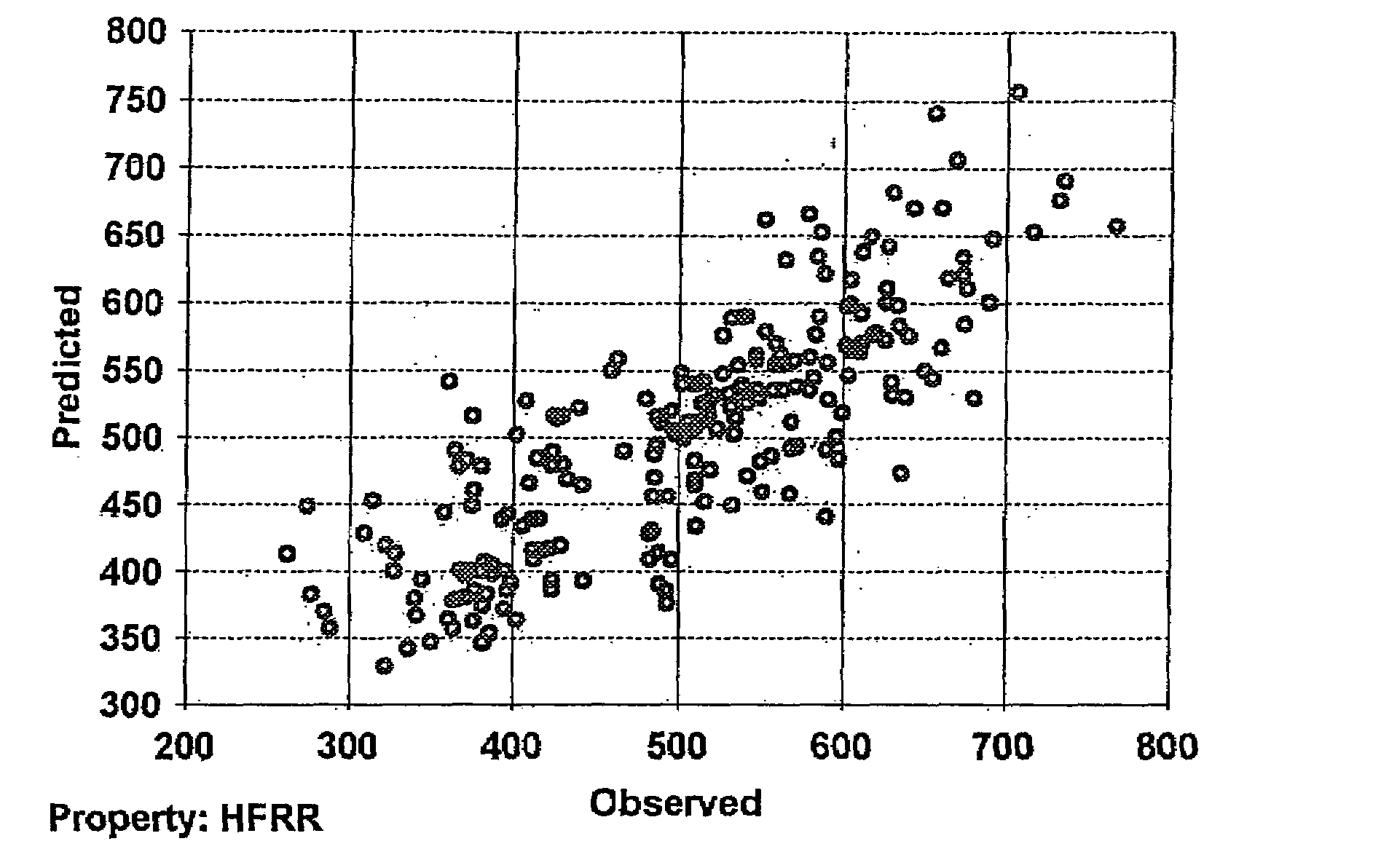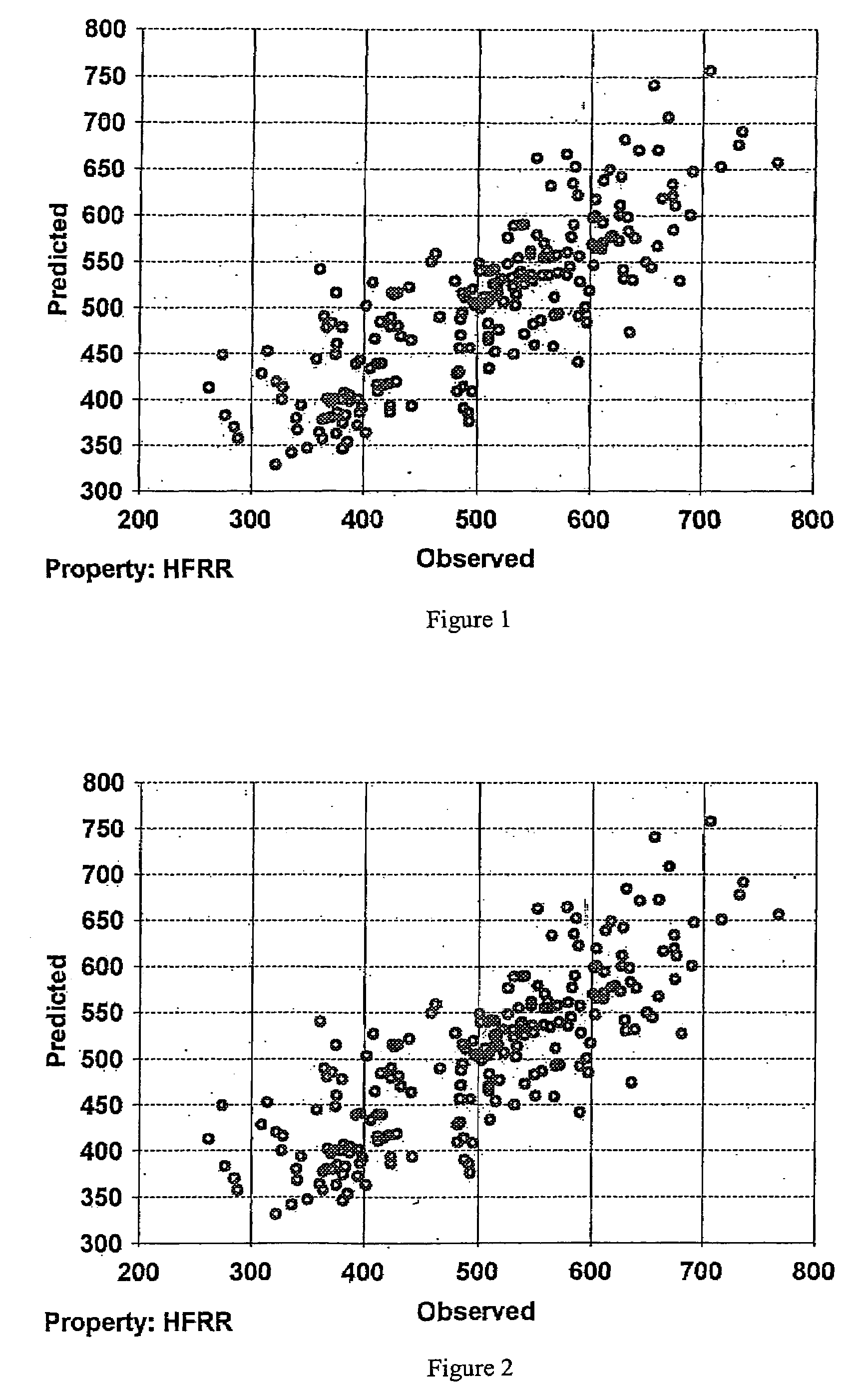Method for prediction of high frequency reciprocating rig wear scar diameter for hydrocarbon mixtures based on mid-infrared spectroscopy
a technology of hydrocarbon mixtures and wear scars, which is applied in the direction of material analysis, material analysis by resonance, instruments, etc., can solve the problems of cost and average of seventy-five minutes to complete, and achieve economic and efficient effects and adequate lubricity properties
- Summary
- Abstract
- Description
- Claims
- Application Information
AI Technical Summary
Benefits of technology
Problems solved by technology
Method used
Image
Examples
example
[0059]This example illustrates the development of a HFRR wear scar diameter prediction equation using an interaction model equation in accordance with the invention.
[0060]The following steps were followed to develop the HFRR wear scar diameter prediction equation for this Example.
[0061]1) A total of 214 control diesel mixtures were tested using the test method ASTM D-6079 to determine their respective HFRR wear scar diameter values. The control diesel mixtures were also each subjected to MIR spectroscopy testing using a PetroSpec Turbine / Diesel analyzer obtained from PAC Petroleum Analyzer Company L.P. producing absorption values (control property results) for each.
[0062]The analyzer used had fourteen filters (each filter produces an absorbance value for the feed tested) related to the following functional groups:
Filter Group
[0063]F1: methyl[0064]F2: methylene[0065]F3: Alkyl nitrate / Naphthalenes[0066]F4: Filter 3 baseline correction[0067]F5: Aromatic[0068]F6: Alkene[0069]F7: Alkene[...
PUM
| Property | Measurement | Unit |
|---|---|---|
| wear scar diameter | aaaaa | aaaaa |
| wear scar diameter | aaaaa | aaaaa |
| scar diameter | aaaaa | aaaaa |
Abstract
Description
Claims
Application Information
 Login to View More
Login to View More - R&D
- Intellectual Property
- Life Sciences
- Materials
- Tech Scout
- Unparalleled Data Quality
- Higher Quality Content
- 60% Fewer Hallucinations
Browse by: Latest US Patents, China's latest patents, Technical Efficacy Thesaurus, Application Domain, Technology Topic, Popular Technical Reports.
© 2025 PatSnap. All rights reserved.Legal|Privacy policy|Modern Slavery Act Transparency Statement|Sitemap|About US| Contact US: help@patsnap.com



